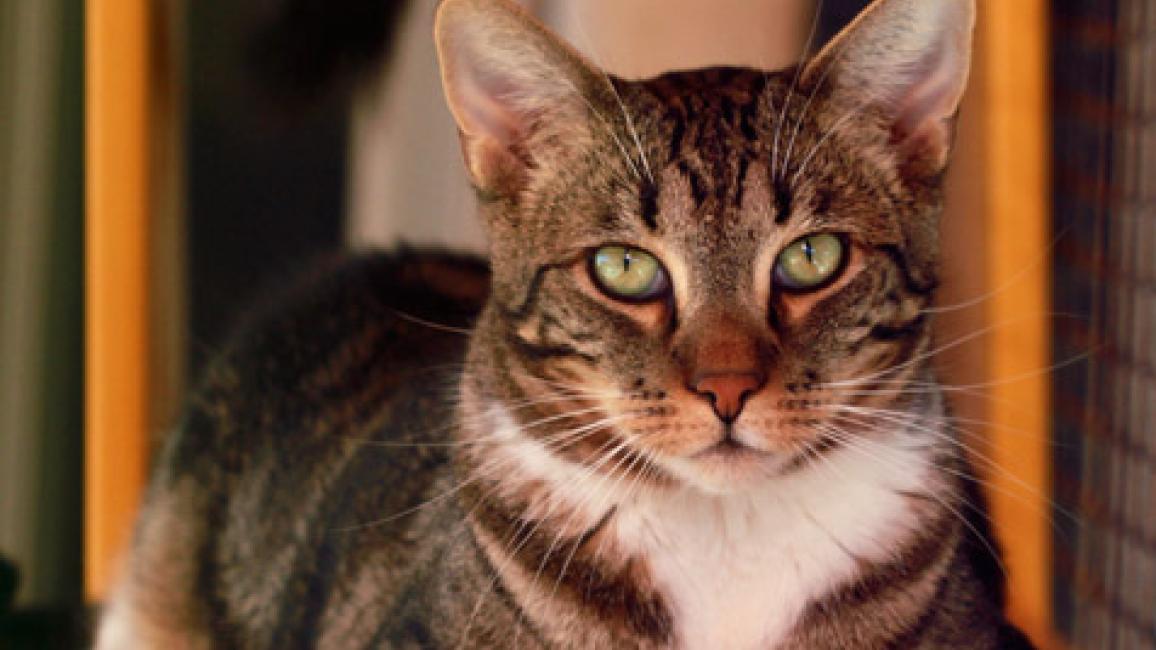Feline leukemia misconceptions


21st birthday cake for FeLV cat Cybella
In 2007, the oldest cat at the Best Friends Sanctuary was positive for the feline leukemia virus (FeLV). Cybella, a Siamese, was – drum roll, please – 21-1/2 years old. Not only did she live a long life but an extremely happy life as well.
One of the biggest misconceptions about feline leukemia, which suppresses a cat’s immune system, is that it is an automatic death sentence. There are many variables, however, that come into play that determine how FeLV will affect a particular cat.
FeLV in cats: How serious is it?
"Many people think FeLV cats are sick and dying and have no quality of life," says cat caregiver Joni Miller. "The reality, though, is felines who are positive for the virus can remain healthy for months or years after their diagnosis until the virus becomes active." In fact, some cats can live to be 10 to 15 years old if they are diagnosed as an adult. Whatever length their life ends up being, their time can be joy-filled.
So what exactly does the future hold for a cat who is diagnosed with FeLV? There are many factors, the biggest of which is the cat’s age — more specifically whether the cat is a kitten or an adult when they acquire the virus.
The virus is harder on kittens than adults. Sadly, most kittens succumb to the disease before their second birthday. Nevertheless, even though the virus can be harsh on kittens, this does not mean their lives are without worth. (Read "A tale of two brothers" about two kittens who had brief but joyous lives.)
A cat leukemia loophole

Mr. Jimmers the cat who has FeLV
Also, there’s a loophole that some fortunate kittens are able to slip through. Consider the journey of littermates Socks and Mr. Jimmers, two young cats who are available for adoption from the Sanctuary.
First a little background. There are two tests that are used to determine a cat's FeLV status: a Snap or ELISA, enzyme-linked immunosorbent assay, and an IFA, indirect immunofluorescent anitbody assay. Joni explains, "The Snap test determines if the virus is present in the cat's system, but not at what stage. A positive on the Snap could mean the cat was recently exposed and fighting it off, or that the cat is chronically infected."
When these two boys came to the Sanctuary as kittens, they tested faintly positive for FeLV on the Snap test and positive on the ELISA test.
A positive on the Snap test can mean that the virus hasn’t gotten into the bone marrow, so they might be able to fight it off. For this reason, this duo lived at Cat World Headquarters, away from other cats with the virus. In time, they tested negative for FeLV on both tests.
Adopting a cat with feline leukemia

Socks, an FeLV-positive cat
Cats who are positive for the feline leukemia virus require special considerations. They can live with other species (dogs, bunnies and so on), but must be an only cat or live with other felines who have the disease. The virus infects felines only, but it spreads easily through casual interaction, including via food and water bowls, litter boxes, and through mutual grooming.
There are feline leukemia vaccines, but they’re only 85 to 98 percent effective, says Joni. "None are 100 percent, which is why it is not recommended that positive cats live with non-positive cats," she explains.
FeLV in the shelter cat population
Joni goes on to comment, "Another misconception is that FeLV cats should be euthanized once they test positive because, again, the misconception is they won't live very long and will be ill and suffering for a long time."
Cats who test positive in shelters do indeed present unique challenges. They must be housed separately from the general population and are more difficult to adopt out in large part because of commonly held misconceptions. Additional veterinary care may be required since the virus weakens a cat's immune system, making them more susceptible to illnesses. Because of lack of space, funds and potential adopters, many shelters find themselves in a difficult predicament. Many automatically kill cats who test positive for the virus.
Regardless of the length of their life, a cat with the virus can lead an incredibly happy life, just like any other cat.
Support or adopt a cat with FeLV
Because of big-hearted and compassionate donors like you, Best Friends Animal Sanctuary is able to provide safe haven for cats, some who have FeLV. Sometimes they need some extra TLC and time to find the perfect forever family, but with your support we are able to provide them with all that they need, for as long as they need it.
Photos by Best Friends staff